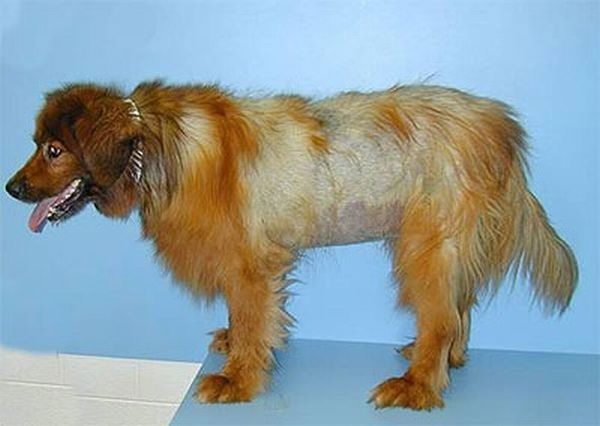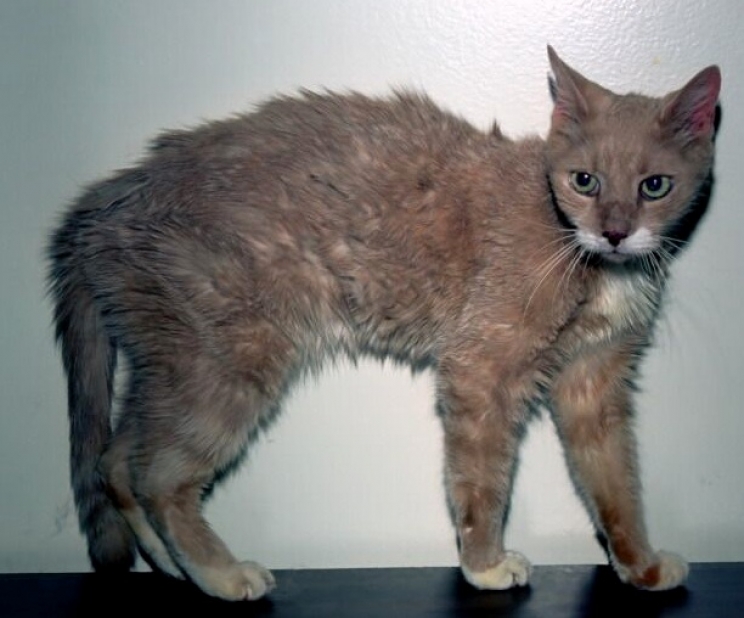The thyroid is a very important gland both in humans and in our animal situated in the neck.
The function of the thyroid is to produce thyroid hormones. Its function is not very known despite its very important role in the regulation of our dogs and cats metabolism. Any dysfunctionality might be due to both poor functionality or excessive functionality of the gland and respectively give origin to two different disease, hypothyroidism and hyperthyroidism
It is very important for us to know about these disease because as time passes they might produce a lot of damage to our dog and cat. We must always evaluate our pets behavior and in any anomalous case, contact a vet.
Thyroid hormones
Thryoxine and triiodothyronine are the thyroid hormones. They have a very similar action; the action of triiodothyronine is much stronger than the action of thryoxine, that is the reason why triiodothyronine is produced less. However, when we have functionality problem, both of them increase or decrease in the organism. These hormones have in first place a calorigenic effect and stimulate the metabolism in the body to destroy the nutrients to produce heat.
To this purpose, these hormones stimulate the destruction of fats and proteins in the body to produce energy, it also has an hyperglycemic effect and stimulates the liver to release the sugar storage it has in the blood stream so that various organs such as the muscles can use it.
They stimulate the growth of young animals and increases the cardiac output: if the heart is stimulated by hormones, it will pump more blood.
Thyroid hormones are not always produced in the same way, but they are regulated according to the organisms necessity.
Hypothyroidism
Hypothyroidism causes the thyroid to loose its functionality. This can be due to an infection in the gland, from an atrophy which might be visible in some breeds, form a cyst that occupies space or from a tumor which limits its functionality.
The vet will be the one that identifies the problem with some very advanced blood tests. What is most important for the owner of the animal is to recognize the symptoms and bring their dog to the vet as soon as possible. We refer this disease to dogs because dogs are the most (or only) affected animal, whilst the cat will suffer from the opposite disease, hyperthyroidism. The symptoms depend on the effects of the hormones themselves, these effects fail if the hormones are in small amount or absent.
Thyroid hormones stimulate, for example, fur growth on your pet: in case of a disease the fur will start to fall off. We can find large bald patches and the remaining fur will result as dull, full of dandruff and will easily fall off even if we gently pet or caress our dog. The dog will not feel itchy, but intense licking might cause the skin to become red and inflamed.
Moreover, considering that the metabolism of the nutrients in the organism is not stimulated, the dog will feel tired and reduce its activity and movement. They will eat unwillingly as the nutrients in the body will remain in the blood stream without being used.
It is also very common for them to look for warm places to lay down. They will get close to radiators or chimneys to feel warmer; this is because they are unable to produce heat on their own to regulate their body temperature. There will be a reduced heartbeat rate and if the dog is not castrated, it will feel no sexual stimuli to reproduction.
The cure to this disease is to administer for a long period of time the synthetic alternative of the "real" hormone, this therapy is initiated only when the vet will have identified the problem. We must take into consideration that it is a very subtle disease which will progressively get worse over time.

Hyperthyroidism
Hyperthyroidism is basically the opposite disease.
This disease mostly affects old cat with an average age of 13 years old and very rarely dogs. Hyperthyroidism seems to be caused by a particularly rich diet, which in the long run will generate the thyroid to grow to allow all the nutrients to be consumed in the organism. An enlarged gland (thyroid) will produce more hormones.
The most common symptom is polyphagia which is directly related to severe weight loss; you will notice your cat eating beyond caloric needs but its weight will decrease, this is because there is a major consumption of the ingested nutrients stimulated by the gland.
The fur tends to increase and will become thicker and longer. However, these hormones also stimulate heat generation and the cat will tend to lick itself intensely to remove the hair from its body, this is when we will come across bald patches. Moreover, this excessive heat production will cause the cat to increase their daily water intake and therefore will feel the need to urinate more often and in greater quantities throughout the day.
Muscles will start to work more than usual and from an external point of view we might notice our pet as extremely active or even aggressive at times. Inside the body, the muscles from the stomach and from the intestine will work more than usual and will therefore stimulate the excretion of the substances in the organism; diarrhea and vomit will be common in this situation.
The diagnosis of such disease is not easy and requires multiple thorough tests. Once the vet has identified such disease, you might have to start a pharmacologic therapy with medicines that will limit and control the functionality of the thyroid gland (these are very expensive) or you might have to intervene with a surgery; the vet will cut off a piece of the thyroid so that there will be a reduced amount of hormones in the body.
Thyroid disease will gradually worsen the lifestyle of your dog and cat over time. It is very important for us to be aware of the first symptoms of such diseases. If we identify the problem on time, the therapy will be much easier (if the disease is identified when there are no severe damage caused yet. )










